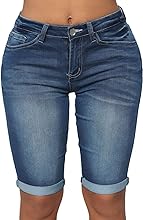
These fences are endangered in N.L., but a Ferryland handyman wants to help them prosper
CBC
Fences might not seem like a gripping subject.
Our eyes are enticed by a rolling landscape, bright saltbox houses, and ponies grazing. Understandably, we might skip over the barriers that separate one field from another. Still, some of our fences here in Newfoundland are relatively unique. There's the wattle fence, the lunger fence, and the very rare wriggle fence.
The wriggle fence is especially beautiful.
It's made using upright posts attached to evenly spaced horizontal logs, then smaller wooden rods, called wriggles, are woven vertically. Wriggle fences have an ancient look and a history that's somewhat hard to trace.
But given that Great Britain has post-and-wattle fences and woven fish weir fences dot the rivers of Ireland, it's safe to assume that these fences migrated here with early European settlers.
Once a common sight, these wriggle fences have fallen out of fashion. Since the 70s, folks have been building with pressure-treated lumber, vinyl, chain links, and other commercially available materials instead.
And so, wriggle-fence making has been placed on the N.L. Craft at Risk list, which is a joint project between Heritage N.L. and the Craft Council of Newfoundland and Labrador.
"We're hoping this list will encourage an interest in heritage crafts. We don't want these skills to disappear," Lara Maynard, the heritage skills training co-ordinator with Heritage N.L., explains.
Heritage N.L. and the Craft Council designed a plan with different moving pieces to save these endangered crafts: they've begun documenting practitioners' processes and artistry, created a mentorship program, and started hosting workshops to encourage participation in these endangered skills.
Guy Barnable of Ferryland hosted one of the inaugural workshops last summer and has made these fences since his early 20s.
"I came home from an extended visit to Fogo and just couldn't get these fences out of my mind," Barnable said. "So, I asked an older gentleman in the town — a friend of my grandfather's — to give me a lesson."
Barnable likes that wriggle fences aren't just for marking territory or separating boundaries.
"They manage to be decorative, economical, utilitarian, and protective at the same time. To me, they just seem like good design. There's some artistry too. You can get creative with them," he said.
The fences made for the Ferryland workshop were woven using spruce, but the island is dotted with ones made of alder or birch.





















 Run 3 Space | Play Space Running Game
Run 3 Space | Play Space Running Game Traffic Jam 3D | Online Racing Game
Traffic Jam 3D | Online Racing Game Duck Hunt | Play Old Classic Game
Duck Hunt | Play Old Classic Game











